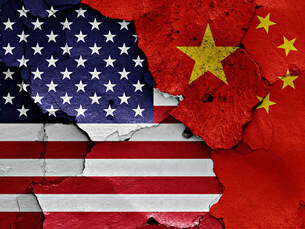
That one concluded very well for the United States. It ended with the collapse of the Soviet Union, its break-up into 15 independent successor states, some of which became U.S. allies, the liberation of the captive nations of Eastern Europe, nine of which are now NATO members, new markets for U.S. goods and services, and most important, a reduced, albeit still dangerous, Russia.
There is little likelihood that our success in the first Cold War will be repeated in the current conflict. This time the Communist “enemy” is of a very different, much more formidable character.
Nevertheless, the new Cold War between China and the U.S. is very much like the old one in its most important feature. Behind all the saber rattling, criticisms about human rights violations and Chinese militarism lurks the real question, the same one that underlay our competition with the Soviet Union: which system—American democratic capitalism or Chinese autocratic capitalism—works best in achieving a nation’s economic goals? It is this question that the rest of the world is asking. And the answer will determine in which direction many of the world’s developing nations decide to go when it comes to aligning with either China or the U.S.
When Soviet Party Chairman Nikita Khrushchev pounded his fists and banged his shoe on his desk at the United Nations General Assembly in 1960, shouting “We will bury you!,” his threat came across as mere bloviation. There was no way the Soviet Union’s deeply flawed command economy could possibly ever catch up with, much less exceed, the United States’ capitalist system. A nation that had to marshal people onto sealed trains at gunpoint and transport them back and forth between cities in order to meet its 5-year economic target for railroad passenger trips had no conceivable chance to prevail in the competition for global supremacy.
China is a different adversary altogether. There, while the rest of the Communist bloc self-destructed, the Chinese Politburo saved itself by resorting to a Machiavellian bargain with its people. It largely opened up its economy in return for retaining absolute political power. Moreover, single-party state control enables China to do big things and do them swiftly. China’s rail transportation system, for example, today consists of more than 24,000 miles of high-speed tracks. The U.S: 34 miles. The rest of the world notices the contrast.
And that’s only the tip of the iceberg. China has quietly insinuated itself into the economies of Africa, Latin America and Asia via massive construction projects and economic assistance initiatives. In contrast, Americans, Republicans in particular, complain about and attempt to slash U.S. foreign aid, which is a pittance compared to our new rival for the hearts and minds of the world’s peoples.
China is also extending its global reach and influence through its $900 billion “Silk Road Initiative,” a resurrection of sorts of the 2,000-year old trade route that traversed Central Asia and the Middle East, linking China and Europe. This massive economic and building project is designed to tie Central Asia, the Middle East and even Europe closer to China while also demonstrating the superiority of the Chinese approach over the United States. This was given a huge boost by the Trump administration’s self-destructive “America First” (and “Only”) approach to international affairs.
Moreover, Trump foolishly opted out of the Trans-Pacific Partnership (TPP), the new trade alliance negotiated by the Obama administration and designed as a counterweight to China in its backyard. By turning his back on the TPP, Trump created a vacuum that China quickly and eagerly filled, ecstatic that the U.S. gifted it such a golden opportunity. Now China is the straw that stirs the Pacific Rim drink, not the U.S. This is already translating into political gains for China at U.S. expense.
Barack Obama’s instincts that prompted his “tilt toward Asia” were correct. That far-sighted strategic enterprise was blown up by Donald Trump. It may be too late now to revive it. China’s head-start means that we can only play catch-up, if we are still in the game at all. U.S. political gridlock and extreme polarization make it doubtful that Cold War 2.0 is likely to go the way of its predecessor.
Dick Hermann
April 24, 2021


 RSS Feed
RSS Feed